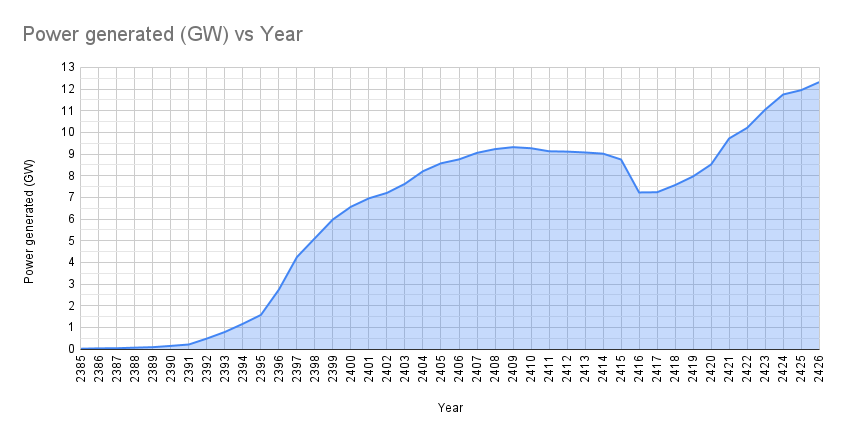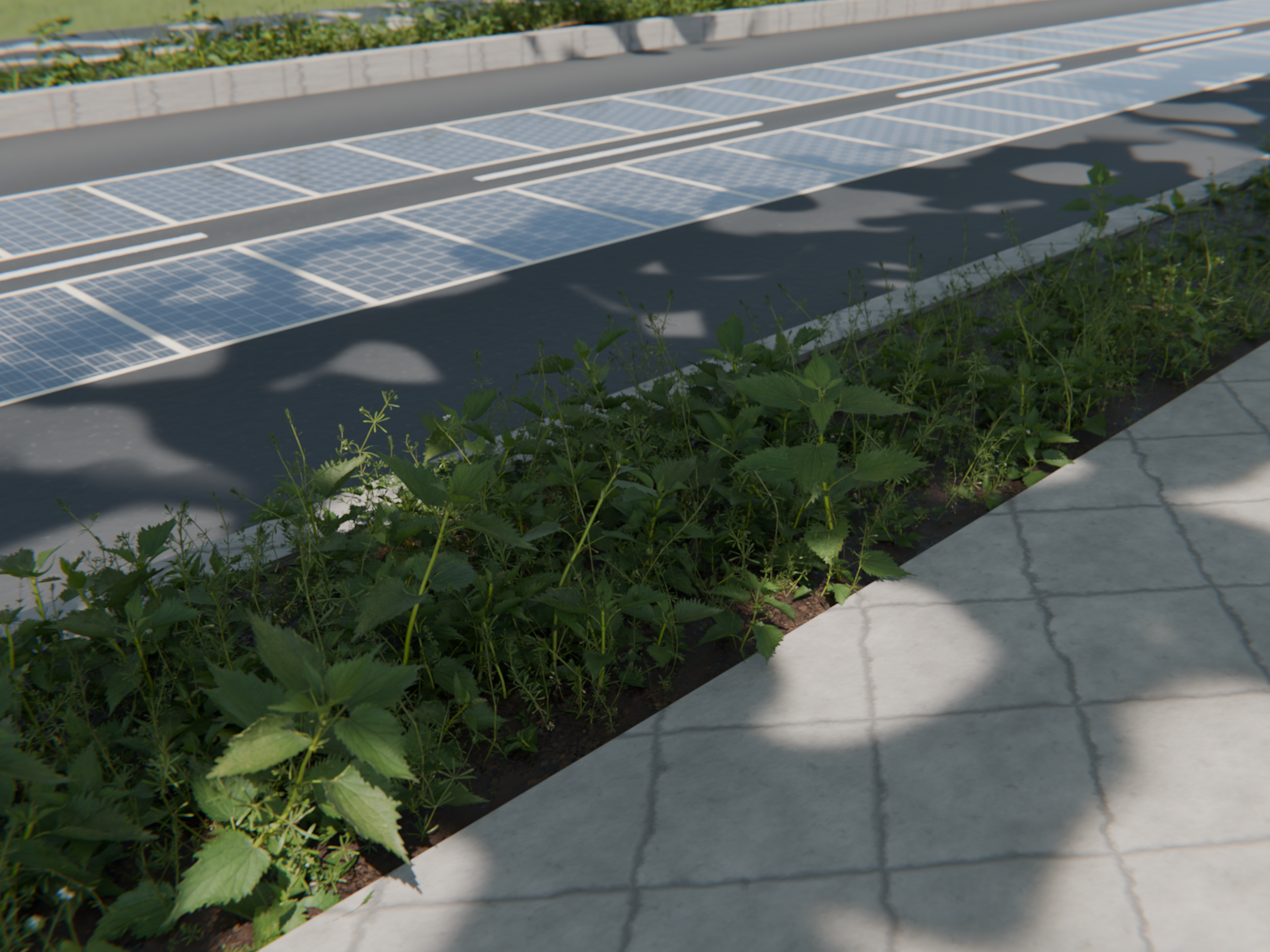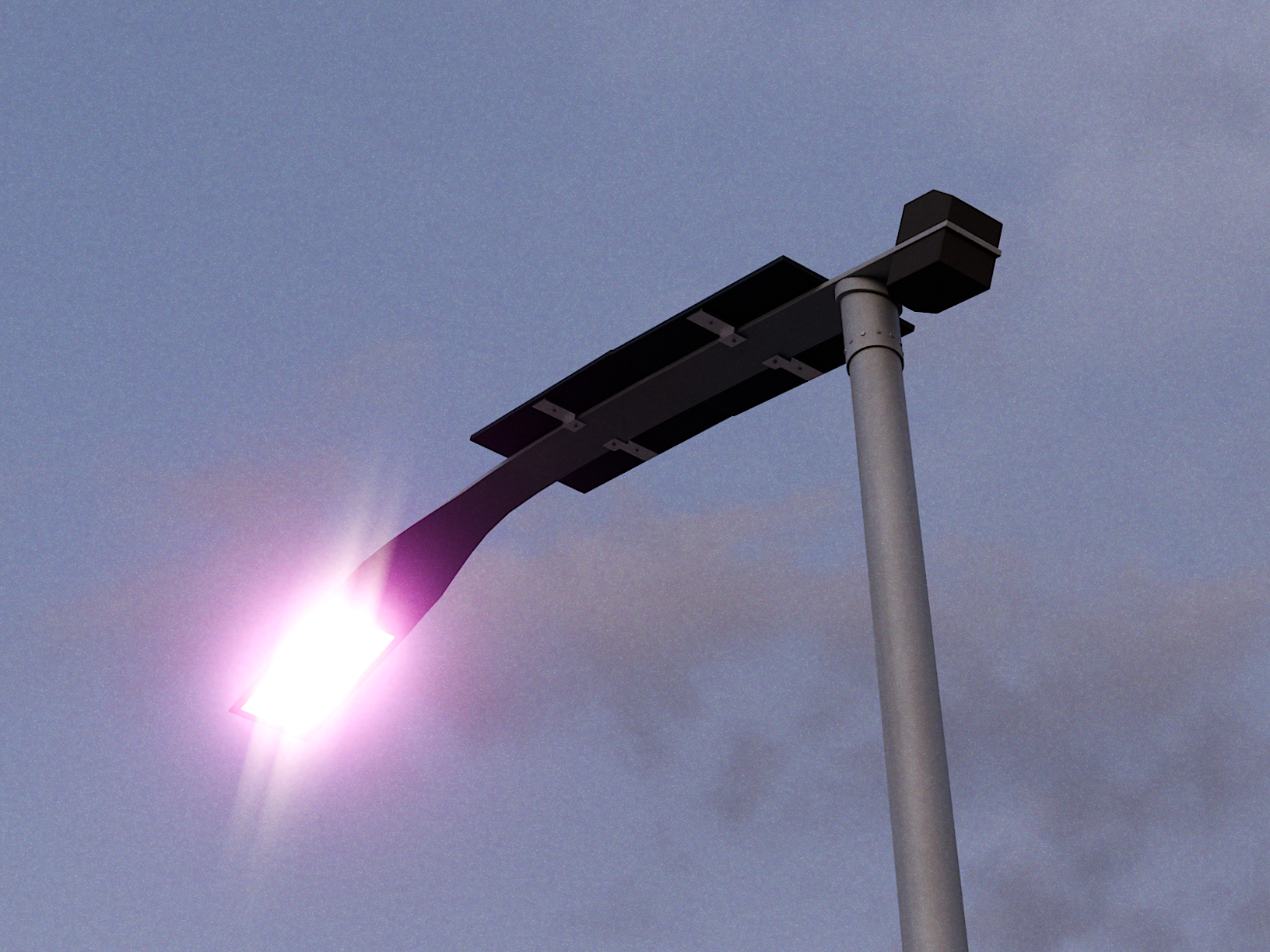Nav bar
Power generation on Luon
Most of the energy on Luon is generated using geothermal, solar, piezoelectricity and nuclear, with a total power generated being slightly over 12 GW. About 45% of the energy is spent on the industrial sector, 30% on business, and the rest being split between transport, housing, research and more.
Methods of generation
Geothermal energy
Accounting for roughly 62% of the total power production, geothermal power is the most common form of power generation on Luon. Strong tidal effects from Kuutar and Tapio makes Luon a very geologically active place, with many volcanos and hotspots created. This has been taken advantage of by the use of geothermal power which use a liquid (most of the time water) and heating them into a steam, which is sufficient enough to power the plant. The vaporized liquid drives electric generators, and is then cooled down and condensed back into a liquid for reuse. Most plants use the closed-loop geothermal system.
Solar energy
The second most common form of power generation is solar which acounts for about 18% of the total power production. Most solar panels are installed on streelights, roads and rooftops. There is a wide variety of solar cells used, with the most common being perovskite cells and bifacial cells. Breakthroughs in intermediate band photovoltaics have helped overcome the Shockley-Queisser limit, and have made their way into most solar cells, boosting their efficiency all the way up to slightly above 50%. Their sudden increase in efficiency have made solar spike in popularity in recent years, incentivizing the creation of multiple solar projects.
Piezoelectric energy
A very hidden form of electricity generation, piezoelectric energy generation is mostly found on roads, pavements, flooring and bridges. It produces about 2.5% of the total energy generated, and is mostly used to power light fixtures like streetlights and celing lights, though they can be used to power decently sized buildings.
Nuclear energy
About 16% of the total power generated is from nuclear power. Most reactors use nuclear fusion, where two light atomic nuclei combine into a heavier nucleus, creating energy in the process. Favor for nuclear energy has dwindled over the years due to the cost of making a nuclear fusion plant, with costs estimated to be about 10-30 times more expensive than geothermal power plants. However, each nuclear fusion plant could generate about 5-10 times the power of a geothermal power plant, somewhat evening out the cost downsides. Recent advancements in technology has helped lower the cost of nuclear fusion plants by as much as 10%.
Another atractive option is the small modular reactor (SMR) which is a class of a small nuclear fission reactor. They are significantly cheaper than nuclear fusion and can be pretty much be used anywhere thanks to their small size, with some being able to fit in a standard shipping container. SMRs have been slowly gaining popularity in recent times, with most being used for construction sites.
History
Upon landing on Luon, most power was being generated by nuclear power systems onboard the landing ships, with some power also being beamed down from the mothership in low orbit. Energy generation was roughly 350 MWh per day. A goal was set to gain complete energy independence within 2 years of landing.
Transition to energy independence
Solar power generation was the main priority as it was among the easiest to produce. Materials for solar cells were quickly located near the landing sites, and material extraction began about 2 months after landing using automated systems. Completion of a small solar cell factory completed ar roughly the same time, with production begining almost immediately. At first, the factory produced 1x1 meter solar panels at a rate of roughly 750 panels per day, which quickly grew to 20,000 panels per day within the span of 5 months. Many more solar cell factories would be produced, bringing the total solar panel production rate to be close to 500,000 panels per day. Energy independence was declared 1 year, 8 months and 27 days after touchdown.
Geothermal energy quickly followed suit, with the fist geothermal power plant being opened roughly a month after energy independence, generating about 200 MW of electricity. There was high potential for geothermal power due to the highly geologically active nature of Luon, encouraging the construction of numerous geothermal power plants.
Gallery

Graph showing power generated over the years (in gigawatts). The dip in 2417 was caused by ████████ █████ failing due to a ████████ ████████████

Both the road and sidewalk have piezoelectric power generation. The road in the background also has solar cells on the inner section of the lanes.

A low-pressure sodium-vapor lamp retrofitted with perovskite solar panels
2426 world electricity generation. Total generation was 12.32 gigawatts
